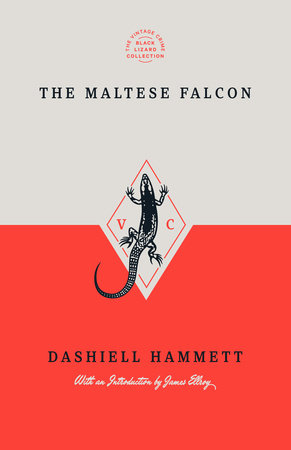The Maltese Falcon (Special Edition) Reader’s Guide
By Dashiell Hammett Josephine Hammett Marshall


1. Sam Spade’s attitude toward authority is patently clear in remarks like “It’s a long while since I burst out crying because policemen didn’t like me” [p. 19] or “At one time or another I’ve had to tell everyone from the Supreme Court down to go to hell, and I’ve got away with it” [p. 170]. How is Spade’s distrust of power manifested in his actions? How important is distrust as an aspect of his character?
2. Of the three women in the book–Brigid O’Shaughnessy, Effie Perine, and Iva Archer–are any fully realized, or are perhaps all three, as stereotypes, three sides of one woman? As a stereotype, what does each woman represent? What does Spade mean, and what does it say about Spade, when he tells Effie, “You’re a damned good man, sister” [p. 160]?
3. A blatant stereotype is Joel Cairo: “This guy is queer” [p. 42], Effie informs Spade when the perfumed Cairo comes to the office. Is a homosexual character effective or necessary in the plot? Would he be as effective without sterotyping? Why do you think Hammett created him?
4. Near the end of the story, Spade says to Brigid, “Don’t be too sure I’m as crooked as I’m supposed to be” [p. 215]. What evidence is there that he’s not crooked? Does honor temper greed in his negotiations with the others in the hunt for the black bird? How are greed and ruthlessness packaged here so that ultimately we might not care whether the characters are crooked or not? Does style compensate for all in the hard-boiled genre?
5. “By Gad, sir, you’re a character” [p. 178], says Gutman, laughing, when Spade suggests making Wilmer the fall-guy. Is the Spade-Gutman relationship one of justice versus corrupt wealth or one of equals competing for the same prize? How does Gutman’s sophistication and erudition reveal another side of Spade?
6. When Spade returns to the office in the last scene, Effie does not greet him with her usual verve. What has happened to the breezily affectionate bond between them? What is Effie’s relationship to Brigid? Will Effie forgive Spade, or do we not know enough about her to make predictions?
Comparing Hammett, Chandler, and Thompson:
1. How does the way Chandler uses Los Angeles in The Long Goodbye resemble or differ from the way Hammett uses San Francisco in The Maltese Falcon? To what extent is this the result of their individual writing styles? Does Thompson resemble either writer with his descriptions of the West Texas oil country in The Killer Inside Me? How important is setting in each of these novels?
2. Although they were brilliant innovators and stylists, Hammett and Chandler were writing for a genre that dictated resolution of the plot. Thompson, on the other hand, in The Killer Inside Me creates a plot rife with ambiguity. What element or elements of his predecessors’ style does Thompson retain? Could Thompson have written The Killer Inside Me without the models of Hammett and Chandler?
3. Thompson inverts traditional crime fiction by writing from the viewpoint of the criminal instead of the detective. In the novels of Hammett and Chandler, how different is the criminal from the detective? Where do Sam Spade and Philip Marlowe fall in their respective, or mutual, attitudes toward authority and law?
4. How does the characterization of women in The Maltese Falcon compare with those in The Long Goodbye? Is Brigid O’Shaughnessy the equivalent of Eileen Wade? Is Effie Perine the equivalent of Linda Loring? What do the differences in these characters tell you about the hard-boiled style? About the authors?
5. Chandler and Thompson write in the first person, and Hammett uses the third person in The Maltese Falcon. How would each of these novels have been affected–for better or worse–if the voice had been reversed? What are the inherent advantages and/or limitations of writing in the first or third person?
Just for joining you’ll get personalized recommendations on your dashboard daily and features only for members.
Find Out More Join Now Sign In